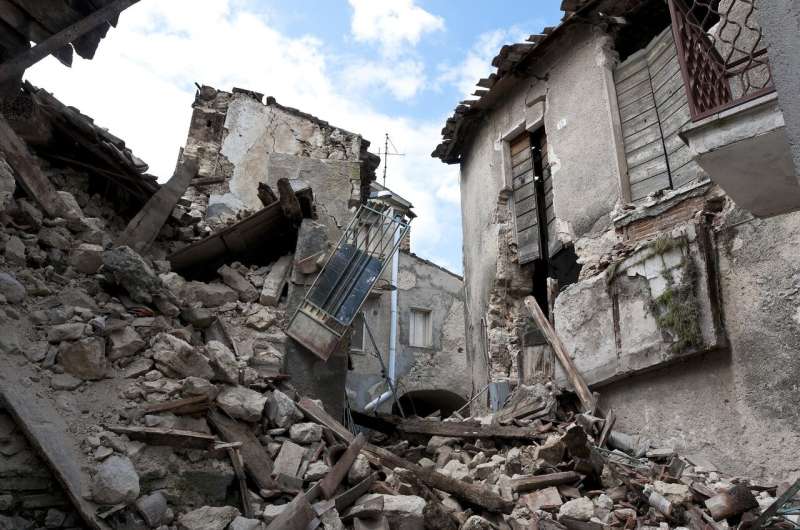Revised: Recent discoveries challenge long-held theories on the origins of earthquakes

June 5, 2024
This article has undergone scrutiny in accordance with Science X's editorial protocols and standards. The following aspects have been underlined by the editorial team to guarantee the content's accuracy:
- fact-checked
- peer-reviewed publication
- trusted source
- proofread
by Brown University
Researchers at Brown University, by examining the geometric composition of rocks at seismic epicenters, are contributing an unexpected insight to the established understanding of earthquake origins.
The research, published in the journal Nature, uncovers the critical influence of fault networks' alignment on the location and magnitude of earthquakes.
These discoveries challenge the prevalent belief that friction inside these faults is the primary determinant of earthquake occurrences. The study could enhance our current understanding of earthquake dynamics.
'Our study presents a vastly different perspective on why earthquakes occur,' stated Victor Tsai, Brown geophysicist and one of the chief authors of the study. 'This has crucial implications for predicting earthquake-prone areas and anticipating the most destructive earthquakes.'
According to Tsai, geophysicists have traditionally attributed earthquakes to the build-up of stress at fault lines until they suddenly slip or fracture, termed the stick-slip behavior.
Previous theories suggested that rapid slippage and ensuing ground motions stem from unstable fault friction. Conversely, when the friction is stable, the tectonic plates slide against each other smoothly, leading to slow movement known as creep, thereby avoiding earthquakes.
Tsai's team argues that the geometry of fault networks may be more critical than the frictional properties, hypothesizing that the fault lines’ complex structures may trigger the unstable or stable behavior.
The team bincludes consideration of complexities within underlying rock formations such as bends, steps, and gaps. The research drew on mathematical modeling and examination of California fault zones, utilizing data from the U.S. Geological Survey's Quaternary Fault Database and the California Geological Survey.
The team likens the phenomenon to serrated saw-like teeth on fault lines brushing against each other. When the rock structures have more complex and rugged forms, they tend to catch each other, leading to the build-up of strain and, ultimately, earthquakes.
The study adds to prior research on the variance in ground motion during earthquakes across different regions worldwide, sparking speculation that sub-surface geometric complexity may play a role.
Upon analyzing California fault data, they discovered that faults with complex substructure alignment exhibited more potent ground motions and potentially stronger earthquakes, while less intricate fault zones resulted in weaker or no earthquakes.
The researchers identified these patterns based on the average misalignment of the examined faults, a measure of how similarly the faults in a specific area align or diverge in direction.
The analysis revealed that fault zones where the faults are more misaligned cause stick-slip episodes in the form of earthquakes. Fault zones where the geometry of the faults were more aligned facilitated smooth fault creep with no earthquakes.
'Understanding how faults behave as a system is essential to grasp why and how earthquakes happen,' said Lee, the graduate student who led the work.
'Our research indicates that the complexity of fault network geometry is the key factor and establishes meaningful connections between sets of independent observations and integrates them into a novel framework.'
The researchers say more work needs to be done to fully validate the model, but this initial work suggests the idea is promising, especially because the alignment or misalignment of faults is easier to measure than fault frictional properties. If valid, the work can one day be weaved into earthquake prediction models.
That remains far off for now as the researchers begin to outline how to build upon the study.
'The most obvious thing that comes next is trying to go beyond California and see how this model holds up,' Tsai said. 'This is potentially a new way of understanding how earthquakes happen.'
Journal information: Nature
Provided by Brown University




